By Mariane Tremblay, 2024
What would be an “experimental exercise in the cultural identity of materiality”? Summer 2023: let’s look back at a provoked, if not improbable, meeting between a Quebecer and a Hungarian, from two generations of ceramists, who asked themselves this question inherent in their medium. Contamination et matérialité culturelle brings together the results of a month of intensive collaborative work between Yanik Potvin and László Fekete, in all the complexity of the processes surrounding the ceramic medium and the human relationships that endure in its ritual. The exhibition was presented at the Contemporary Art Center Langage Plus (Alma, QC., Canada) in September 2023.
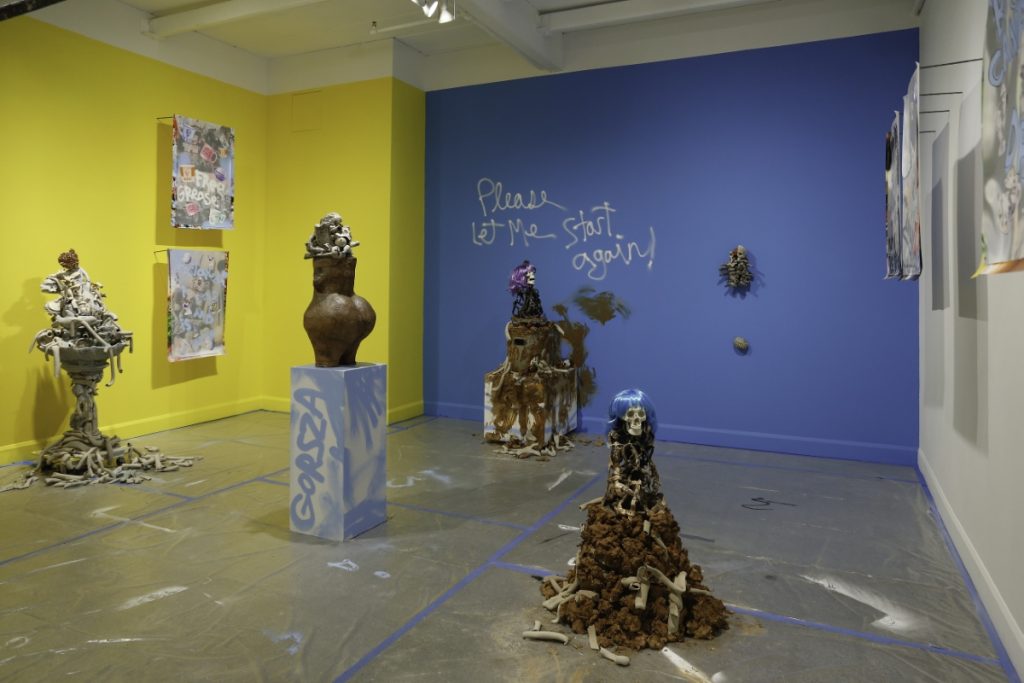
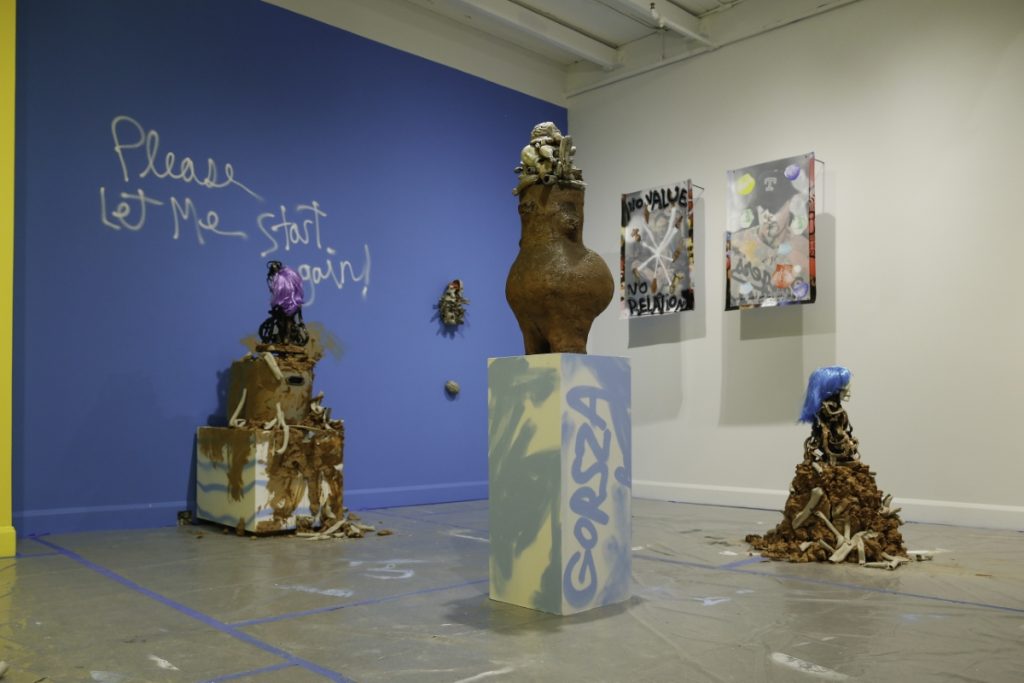
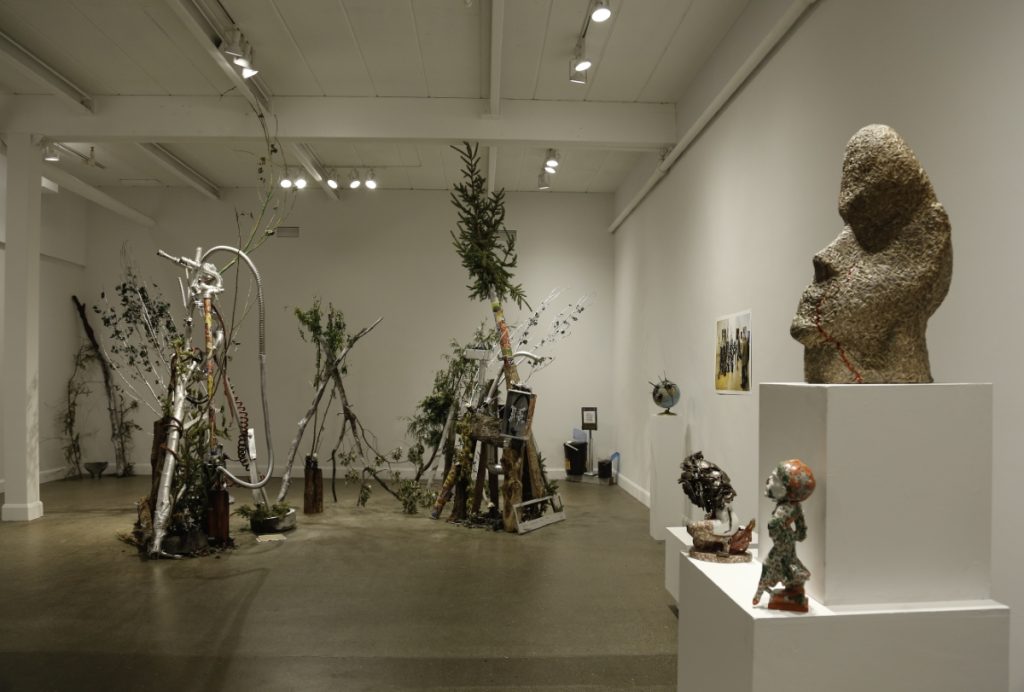
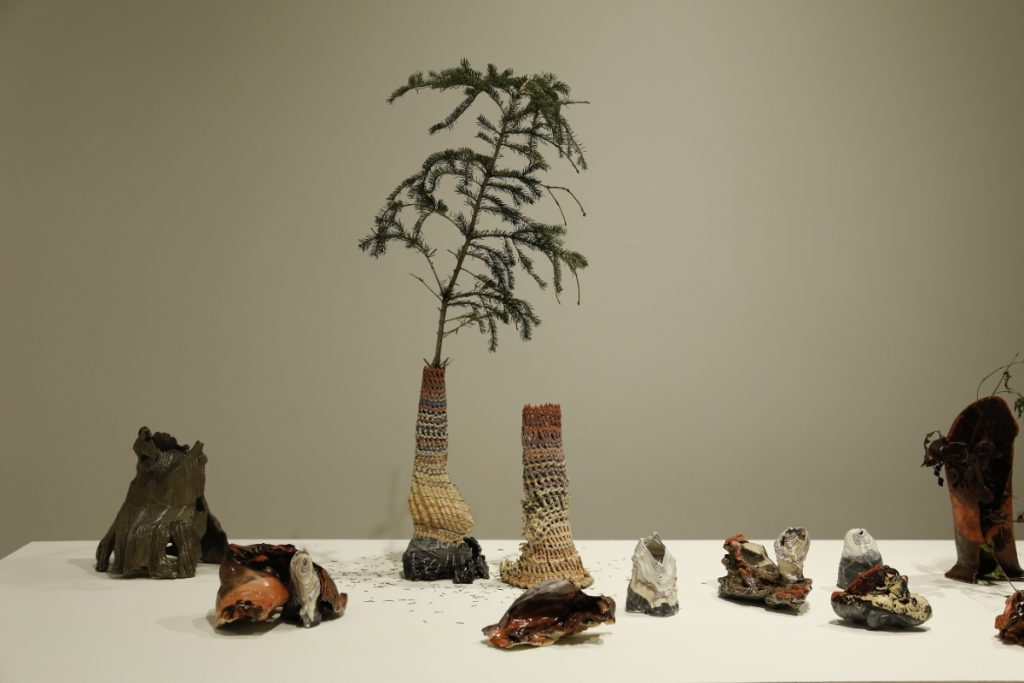
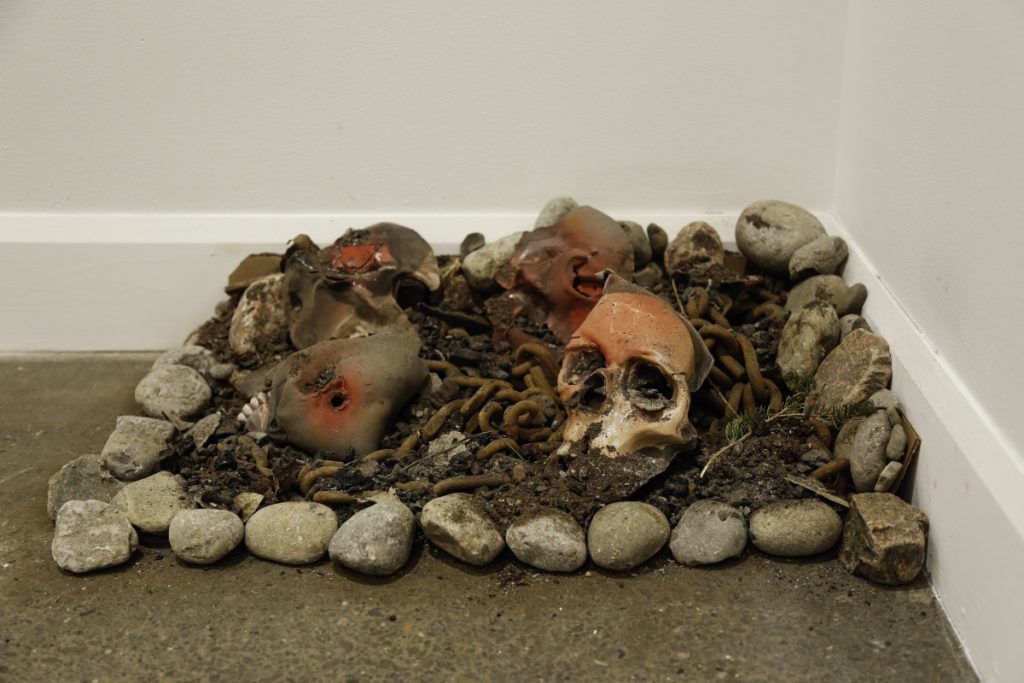
Read more about Yanik Potvin and László Fekete’s project, Contamination and Cultural Materiality
Having worked as a professional anthropologist and archaeologist for around ten years, Yanik Potvin began working with clay and ceramic art as a self-taught artist in 2007, thanks to experimental archaeology. As a protoartist1, he is now a doctoral (PhD) student in art studies and practice at the Université du Québec à Montréal (UQAM). László Fekete is one of the major influences on his creative research, coming from a wide range of cultural and artistic backgrounds. This Budapest artist, who has won several international ceramic prizes over the course of his career, emerged in the context of post-war culture. By reworking existing ceramic pieces and found materials, particularly from Herend Porcelain, he creates sardonic works imbued with socio-political commentary. Fekete’s extraordinary family history has had a profound impact on both his life and his artistic expression. It is therefore through a cultural perspective and a critical analysis of its materiality that he approaches the material of clay using two original techniques. Understandably, everything that characterises Fekete, from his Hungarian origins to his past and his art, resonates with Potvin, who is fascinated by the Eastern Europe of yesterday and today.
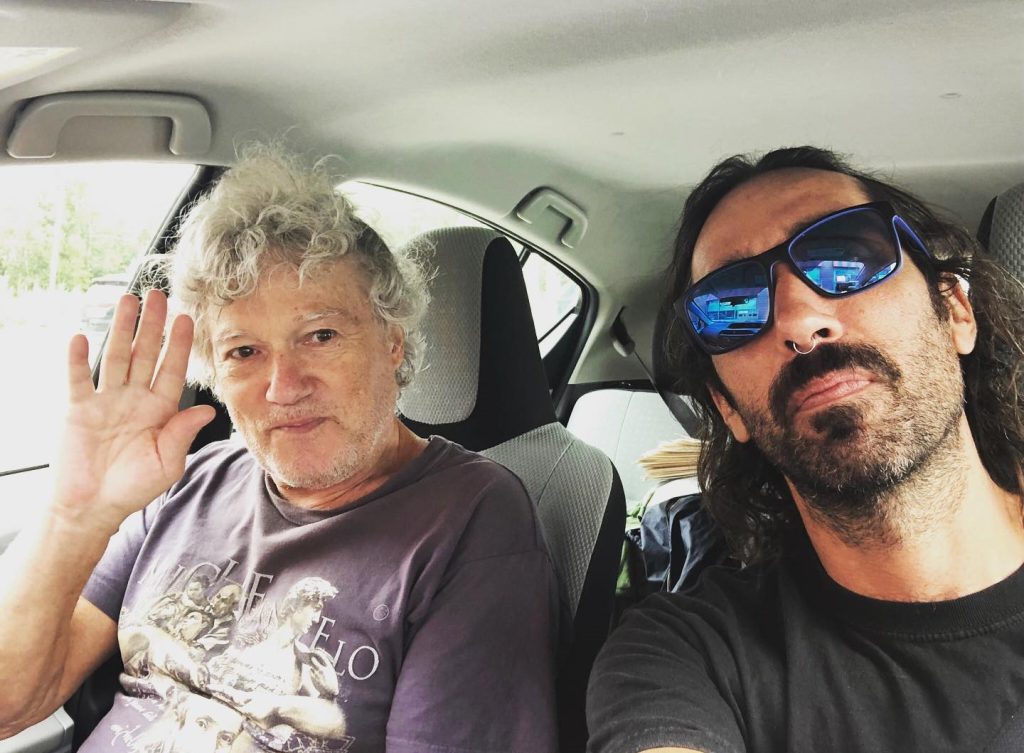
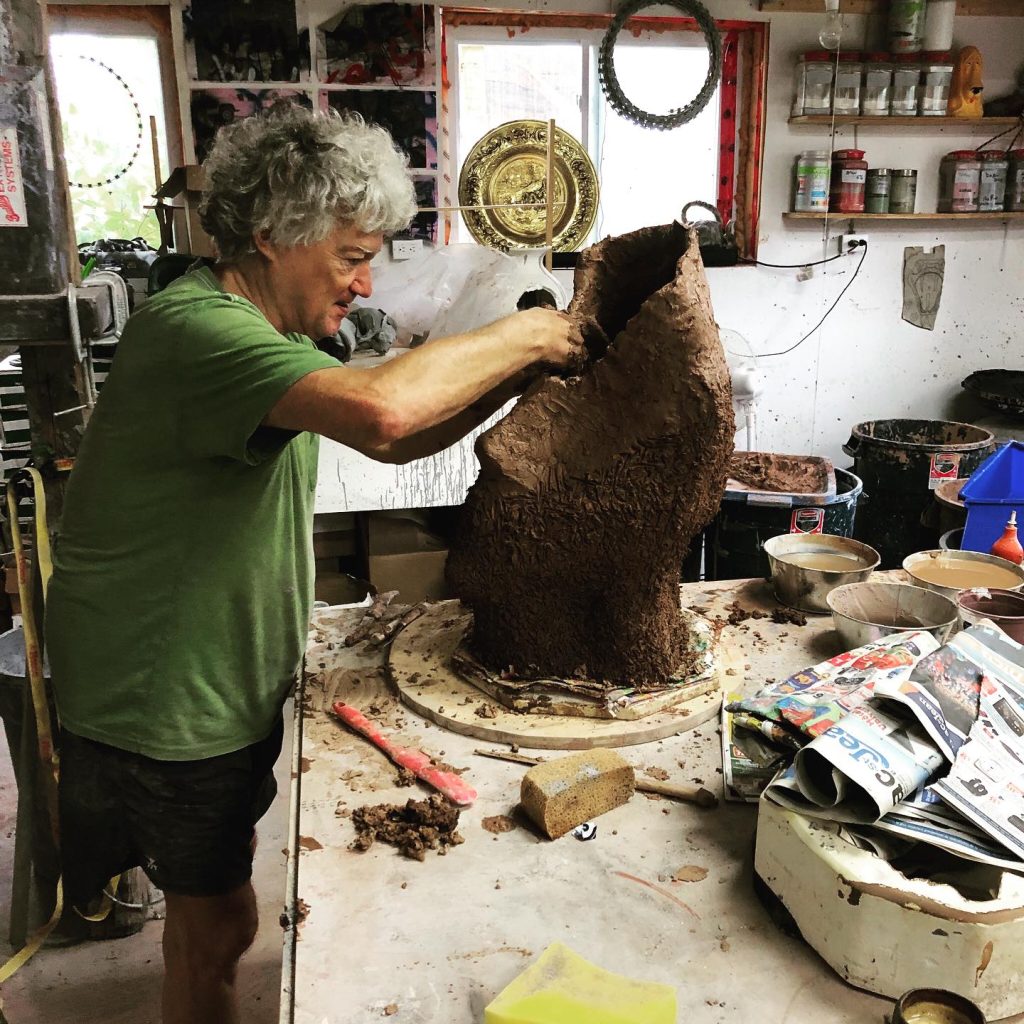
Sensitive clay
To understand the essence of the work in question, it is necessary to mention that Potvin’s archaeoartistic approach, as a researcher from the human sciences, contributes to the development of “creative anthropology”2 and to the decolonization of knowledge. In essence, an archaeologist looks for facts in the field rather than in the written word, as a historian does. It is therefore a question of giving value to oral transmission and enabling the communities that created the artefacts studied to regain a form of agentivity over the archaeological process, the opposite being tantamount to losing a large part of the context of the object.
This is the whole point of their “experimental exercise on the cultural identity of materiality”, basing the experience of clay on the human encounter. After several years of correspondence, Fekete accepted Potvin’s invitation to take part in his research in his ceramics studio in Hébertville, Quebec, as a collaborator, or rather as a living cultural heritage of the world of ceramics. For a whole month, the Hungarian took part in the daily life of his host, his wife and two sons, sharing family intimacy and customs. He incorporated a health routine by going swimming in the waters of nearby Lac-Saint-Jean. A creator first and foremost, he wandered around the studio at all hours of the day, even before his first morning coffee. In short, the septuagenarian forged an instant familiarity with the Potvin family and their home, which fostered the open and friendly exchanges needed to ensure the smooth running of the experimental project. How would this new relationship affect the objects being made? What are the social, historical, or political processes that shape the profound associations between materials and culture?
Seeing each other at work in a shared studio lays the foundations for contamination. The experimental exercise means adapting the ceramic medium to the local creative context, to the type of clay found on North American soil, to the weather conditions that allow the pieces to be dried and woodfired. It also means observing the mechanisms by which the materials convey these cultural meanings. The cultural identity in question is rich in the history of a country and a family past marked by repression and a succession of foreign dominations, ceramic traditions, and major anthropological questions about the human and the material, the deconstruction of the ceramic object and the concepts that surround it. All these factors come together in the process of creating a sensitive object, where its true value may lie.
In fact, cultural materiality offers a conceptual framework for examining the relationship between material objects, culture, and the society in which they are created and used. Potvin asks whether cultural codes remain embedded in the gesture of clay, its performativity, which takes us all the way back to human protohistory. A dialogue of dust, earth, gestures, and words around a meta-artistic experience that has spanned the ages: the ritual of ceramic firing.
In a spirit of personal innovation in which the two artists challenged each other, they produced a hybrid kiln in Potvin’s installations that is unique in Canada: a single-chamber Noborigama-style kiln with an off-centered arch borrowed from the design of the Kyoto potters. This wood-fired kiln can reach very high temperatures, close to those of the mouth of a volcano. It offers a wealth of creative possibilities, despite the fact that the success of firing ceramics trapped in the kiln, which is literally bursting at the seams, is largely uncontrolled, with the risk of cracking or even bursting, causing major collateral damage.
“Contamination and cultural materiality” is therefore the title that unites their two exhibitions at Langage Plus, a contemporary art center in Alma (Quebec, Canada) whose main dissemination mandate allows it to present experimental and avant-garde projects like this one. Looking at the work presented in the galleries, it would be hard not to compare the artists László Fekete and Yanik Potvin, who are, let’s face it, two “punks” in their own way. The exercise is almost inevitable, since it was together, in the same studio, that they shaped, modelled, blew and fired new ceramics, which cohabited closely for several weeks on their worktables. Although their work is unique to each of them, there are great similarities between their proposals.
Raw, fired or both
László Fekete’s clay-working techniques range from the lengthy process of applying slip in layers using a medical bulb, to blowing slip using a sprayer of his own invention, to annealing assemblies of broken pieces of knick-knacks. Most of the bourgeois rejects collected by Fekete come from the traditional Hungarian Herend porcelain industry: luxurious, classic objects hand-painted and embellished with gilding.
The artist is also used to working with monumental ceramics; in Quebec, time constraints have forced him to work in small format, as miniature replicas of his usual gigantic pieces assembled in slip. The result is shapeless containers and sculptures, adorned with branches of plants and fir trees that will decay over the course of the exhibition. His ceramic pieces are accompanied by found and salvaged materials: an installation of drilling towers transformed into trees, among which are hidden cheerful little trinkets with a falsely tarry glaze. Between a forest denatured and violated by industry and the remains of a declining oil industry over which nature is reclaiming its rights, Fekete unabashedly expresses his fears about the future of the world.
How could Fekete create without honouring the heroic work of his parents? They led a double life by night in order to falsify official documents, a decisive role that helped save over 1,000 lives during the Holocaust. Of course, his art refers bluntly to the atrocities of repression in Hungary, which affected the family and social context in which he forged himself as an individual – creator, citizen, son. Using a no-holds-barred approach and the medium of ‘terracotta’, the Hungarian artist plunges us into a completely disillusioned vision of the world, drenched in tar, oil, blood and smog, in the immeasurable violence done to the planet and to human beings: the Earth is fired.
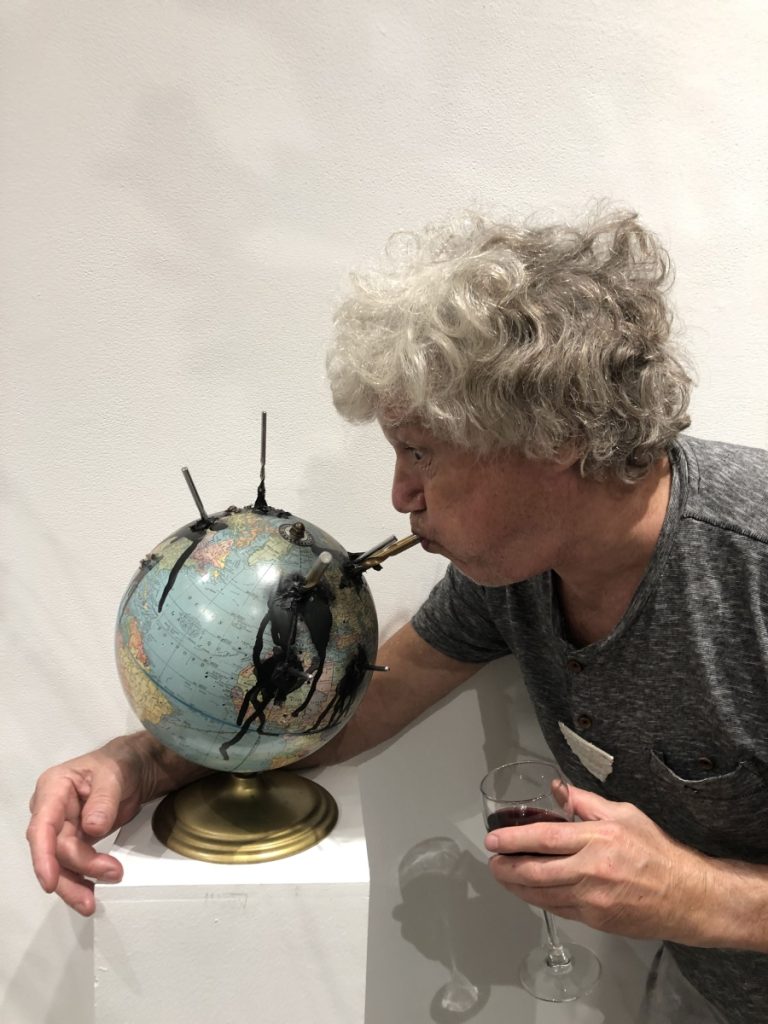

During the exhibition, the Israeli-Palestinian conflict, coupled with the Russian-Ukrainian war, raged once again. The significance of the ceramic skulls laid out on the floor in ash, in memory of his uncles who were exterminated in Ukraine during the Second World War and then burnt in a Nazi crematorium, was made more concrete than ever by current international political events. What a strange predestined path for this artist, who creates through the action of fire in a ceramic kiln.
In Yanik Potvin’s L’ordre selon mes parents, we can see the full influence of Fekete on his artistic work: maximalist assemblages, deconstruction of the object, a multitude of media and more. The striking room presenting the zone of disorder really destabilises the codes of contemporary art. The walls are dirty and graffitied, and the floor is covered with tarpaulin as a result of the artist’s use of spray paint on photographic montages of popular and archaeological iconography. The artist created this rather chaotic installation using instinctive, almost mechanical gestures. Amongst the muddy scenes of raw clay that he presents, we can feel the action of the hands lingering in the objects. The movement is definitely there, between the bits of clay in the process of drying that will gradually collapse to the ground, the groans of a canine László hungry for postmodern ceramics and the video of an anthill in wood ash that is faster than life itself. His exhibition is a living experience of clay, tinged with hints reserved for the protagonists and brief moments of complicity captured here and there during their intensive month of creation.
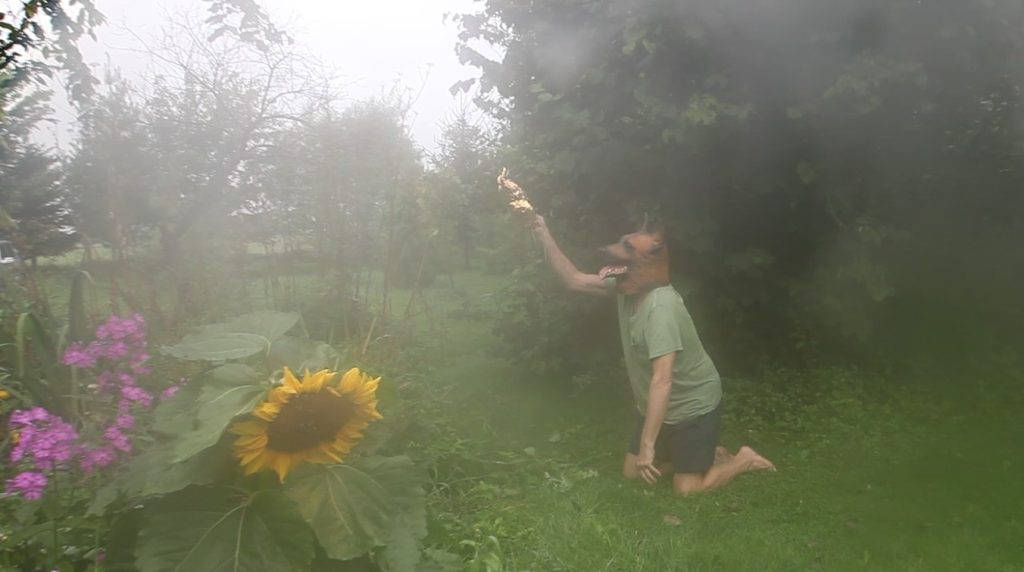
He takes his approach to the medium a step further by contextualizing ceramics with the integration of other minerals, such as the purifying salt in a swimming pool, or by colouring two walls yellow and blue, in support of a repressed people. It is by tracing all the signifiers and referents scattered throughout the zones of “order and disorder” in his exhibition that we understand Potvin’s critical love of archaeology, anthropology and ceramic artefacts. He immerses us in the culture of Eastern Europe through works in fired or unfired clay that refer, among other things, to the proto-writing on the Tărtăria tablets discovered in Romania, to a Polish meal, and to the reproduction of children’s skulls moulded from models taken from human anatomy laboratories. As another strategy, he graffitied the name of his reproduction of the Gorzsa Venus onto its base, a female anthropomorphic vessel from the Neolithic period found in Hungary, which offers a hybrid form between sculptural amulet and utilitarian container. Studying the ceramic cultural objects of ancient peoples, Potvin is more than aware that his artistic works are in fact artefacts that will survive the test of time. But will they be able to convey the context in which they were created, will they transpire the humanity that forged them?
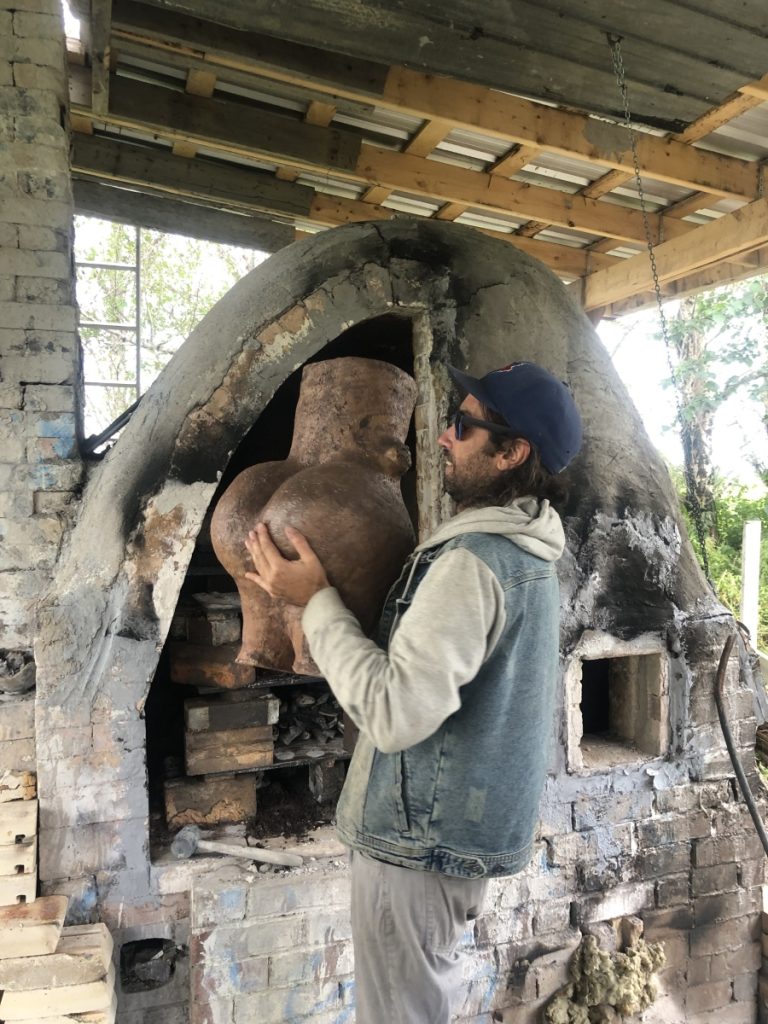
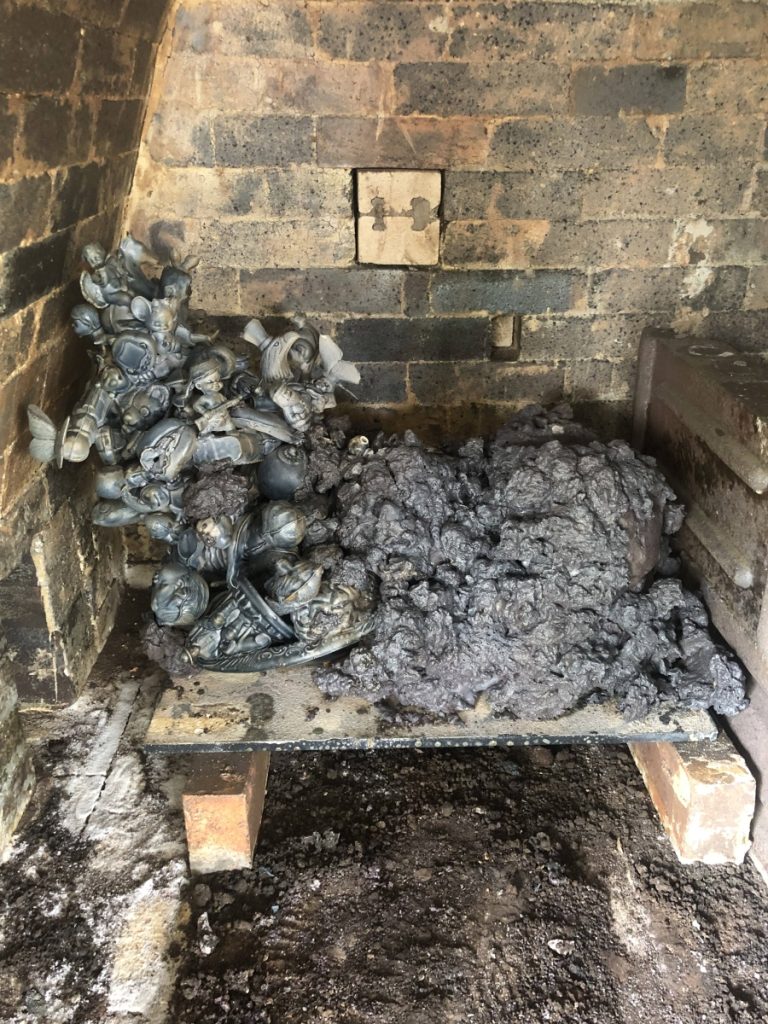
The aim of the contamination exercise, intended to be continued in Hungary in a second phase in 2024, was to investigate a materiality that is culturally indissociable from its context of creation, life and utility. One thing remains invariable: getting their hands dirty in clay remains the point of union for Fekete and Potvin, bringing them back to childhood reminiscences that explain the dissident love they have for the ceramic medium and the questioning of its conventions. At the heart of their research, the two artists transgress the medium by rubbing shoulders with other significant materials: photographs, prefabricated or natural objects, spray paint, scraps and words. Through a form of clay decay, the result is a hodgepodge of ideas that take on meaning by contaminating each other and reaching us at different levels of reading. Wigged or dirtied, their ceramics are a far cry from a traditional approach, though they draw on all its foundations.
About the author
Twice winner of the Prix littéraire Damase-Potvin, Mariane Tremblay has been contributing text and images to various publications in Quebec, France and Germany for the past ten years. Moved by the countryside where she grew up, she is a visual artist, author, cultural worker and co-founder of the Club de prospection figurée. Writing overlaps with her studio practice, as a means of vibrating as much with her own creative research as with that of her peers. Mariane looks for signs of the “extra ordinary”. Sensitive to the fabulous variations in perception and the eloquence of visual silence, she devotes herself to perceiving, seeing clearly and clear-seeing. A master of art, she received interdisciplinary training at the Université du Québec à Chicoutimi. She lives in Larouche, QC., Canada.
Footnotes
- In this context, the prefix proto- suggests a primitive, preliminary or fundamental stance. Potvinwould position himself at the beginning of a particular approach in the visual arts and contemporary ceramics, while adopting a perspective and methods that reflect those of an archaeologist or anthropologist. In other words, the prefix proto- underlines both the exploratory and experimental aspect of his artistic approach, as well as his commitment to examining and interpreting his art through the prism of research in the aforementioned fields.
- Link
















